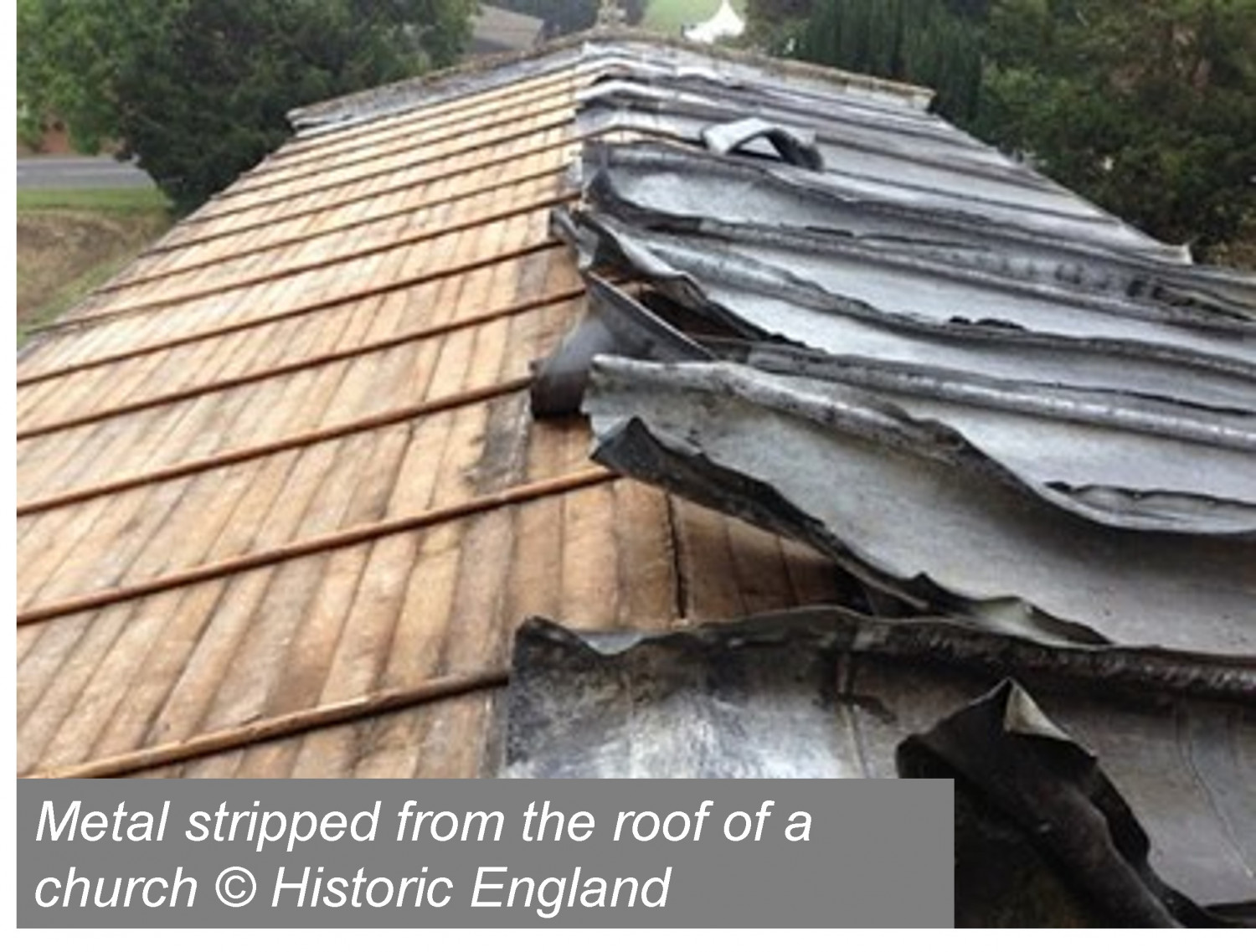 Historic England have published two new advice notes on Theft of Metal from Church Roofs, to replace the 2017 advice note on metal theft.
Historic England have published two new advice notes on Theft of Metal from Church Roofs, to replace the 2017 advice note on metal theft.
The first note, Theft of Metal from Church Roofs: Replacement Materials, deals mainly with replacing lead and copper roofs on historic church buildings. The revised note does not change Historic England’s policy. It seeks to convey an understanding of the emotional, social and financial cost that metal theft imposes on congregations.
“Historic England fully appreciates the frustration and distress caused by crimes affecting historic places of worship, particularly metal theft.
When lead or copper roof coverings have been stolen, we understand it may be too risky to replace with the same materials. We have found that the most appropriate and long-lasting alternative is terne-coated stainless steel (TCSS). In some circumstances, natural slates or clay tiles may be suitable alternatives, if they are historically, geologically and technically appropriate. A well-detailed design, good specification and experienced contractors are key to ensuring the performance of the replacement roof covering.”
The technical advice note on church roof replacement using terne-coated stainless steel remains current.
The second note deals with measures to prevent theft and how to respond if a theft has taken place.
This updated advice on replacement materials is intended to give maximum clarity to congregations who are still dealing with the consequences of the sharp rise in the number, severity and geographical spread of metal thefts from church roofs since publication of the previous advice note in 2017.
The aim is to give clear information to congregations, Diocesan Advisory Committees and Chancellors, architects, surveyors and local authorities. It focusses on church buildings, as these are the primary targets for thieves, but the information is also applicable to other listed buildings and places of worship. The notes set out the difference between emergency coverings, temporary coverings and permanent replacement materials.
